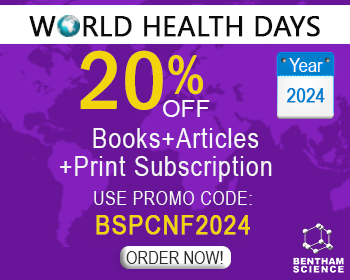Abstract
Angiogenesis, the growth of new blood vessels, is a natural defense mechanism helping to restore oxygen and nutrient supply to the affected brain tissue following an ischemic stroke. By stimulating vessel growth, angiogenesis may stabilize brain perfusion, thereby promoting neuronal survival, brain plasticity, and neurologic recovery. However, therapeutic angiogenesis after stroke faces challenges: new angiogenesis-induced vessels have a higher than normal permeability, and treatment to promote angiogenesis may exacerbate outcomes in stroke patients. The development of therapies requires elucidation of the precise cellular and molecular basis of the disease. Microenvironment homeostasis of the central nervous system is essential for its normal function and is maintained by the blood-brain barrier (BBB). Tight junction proteins (TJP) form the tight junction (TJ) between vascular endothelial cells (ECs) and play a key role in regulating the BBB permeability. We demonstrated that after stroke, new angiogenesis-induced vessels in peri-infarct areas have abnormally high BBB permeability due to a lack of major TJPs in ECs. Therefore, promoting TJ formation and BBB integrity in the new vessels coupled with speedy angiogenesis will provide a promising and safer treatment strategy for improving recovery from stroke. Pericyte is a central neurovascular unite component in vascular barriergenesis and are vital to BBB integrity. We found that pericytes also play a key role in stroke-induced angiogenesis and TJ formation in the newly formed vessels. Based on these findings, in this article, we focus on regulation aspects of the BBB functions and describe cellular and molecular special features of TJ formation with an emphasis on role of pericytes in BBB integrity during angiogenesis after stroke.
Keywords: Cerebral stroke, vascular remodeling, angiogenesis, tight junction proteins, blood-brain barrier permeability, barriergenesis.
[http://dx.doi.org/10.2174/157340310791658802] [PMID: 21804783]
[http://dx.doi.org/10.1161/STR.0000000000000211] [PMID: 31662037]
[http://dx.doi.org/10.1038/jcbfm.2009.100] [PMID: 19654590]
[http://dx.doi.org/10.1523/JNEUROSCI.4956-08.2009] [PMID: 19339612]
[http://dx.doi.org/10.1161/01.STR.0000037675.97888.9D] [PMID: 12468801]
[http://dx.doi.org/10.1038/sj.jcbfm.9600573] [PMID: 17971789]
[PMID: 20013717]
[http://dx.doi.org/10.1002/stem.161] [PMID: 19557831]
[http://dx.doi.org/10.1111/j.1742-4658.2009.07174.x] [PMID: 19664072]
[http://dx.doi.org/10.1038/nm0603-685] [PMID: 12778167]
[http://dx.doi.org/10.1126/science.1095505] [PMID: 15060285]
[http://dx.doi.org/10.1038/sj.jcbfm.9600378] [PMID: 16883352]
[http://dx.doi.org/10.1161/01.RES.87.3.176] [PMID: 10926865]
[http://dx.doi.org/10.1007/s00401-009-0483-6] [PMID: 19142647]
[http://dx.doi.org/10.1172/JCI9369] [PMID: 11018070]
[http://dx.doi.org/10.1097/00004647-200204000-00002] [PMID: 11919509]
[http://dx.doi.org/10.1016/j.nurx.2006.07.007] [PMID: 17012060]
[PMID: 10211994]
[http://dx.doi.org/10.1038/jcbfm.2011.97] [PMID: 21772310]
[http://dx.doi.org/10.1007/s10545-013-9608-0] [PMID: 23609350]
[http://dx.doi.org/10.1387/ijdb.103224sl] [PMID: 21769778]
[http://dx.doi.org/10.1046/j.1469-7580.2002.00064.x] [PMID: 12162730]
[http://dx.doi.org/10.1111/j.1528-1167.2012.03696.x] [PMID: 23134489]
[http://dx.doi.org/10.1038/sj.jcbfm.9600375] [PMID: 16850029]
[http://dx.doi.org/10.1161/STROKEAHA.110.608257] [PMID: 21940972]
[http://dx.doi.org/10.1111/febs.13412] [PMID: 26277326]
[http://dx.doi.org/10.3171/foc.2007.22.5.5] [PMID: 17613235]
[http://dx.doi.org/10.1016/j.cell.2015.10.067] [PMID: 26590417]
[http://dx.doi.org/10.1016/j.devcel.2011.07.001] [PMID: 21839917]
[http://dx.doi.org/10.1038/nature09522] [PMID: 20944627]
[http://dx.doi.org/10.4155/tde.11.23] [PMID: 22826851]
[http://dx.doi.org/10.1016/j.neuron.2010.09.043] [PMID: 21040844]
[http://dx.doi.org/10.1038/nn.2946] [PMID: 22030551]
[http://dx.doi.org/10.1016/j.neuron.2017.03.043]
[http://dx.doi.org/10.1186/s12974-020-01788-3] [PMID: 32252790]
[http://dx.doi.org/10.1007/s12975-019-00709-8] [PMID: 31292838]
[http://dx.doi.org/10.1007/s11481-009-9164-4] [PMID: 19655259]
[http://dx.doi.org/10.1016/j.nbd.2003.12.016] [PMID: 15207256]
[http://dx.doi.org/10.1083/jcb.40.3.648] [PMID: 5765759]
[http://dx.doi.org/10.1078/0171-9335-00101] [PMID: 11089919]
[http://dx.doi.org/10.1002/glia.20049] [PMID: 15326610]
[http://dx.doi.org/10.1016/j.neuron.2008.01.003] [PMID: 18215617]
[http://dx.doi.org/10.1083/jcb.123.6.1777] [PMID: 8276896]
[PMID: 9247194]
[http://dx.doi.org/10.1111/j.1471-4159.2008.05582.x] [PMID: 18647175]
[http://dx.doi.org/10.1111/j.1471-4159.2009.06113.x] [PMID: 19457074]
[http://dx.doi.org/10.1083/jcb.147.1.185] [PMID: 10508865]
[http://dx.doi.org/10.1007/s004010000180] [PMID: 10965803]
[http://dx.doi.org/10.1007/s00401-011-0883-2] [PMID: 21983942]
[http://dx.doi.org/10.1083/jcb.200302070] [PMID: 12743111]
[http://dx.doi.org/10.1002/jcp.20823] [PMID: 16998798]
[http://dx.doi.org/10.1523/JNEUROSCI.1432-18.2018] [PMID: 30504279]
[http://dx.doi.org/10.1016/S0166-2236(00)02004-X] [PMID: 11718877]
[http://dx.doi.org/10.1152/ajpheart.00027.2002] [PMID: 12234806]
[http://dx.doi.org/10.1038/jcbfm.2010.29] [PMID: 20234382]
[http://dx.doi.org/10.1152/ajpheart.00889.2011] [PMID: 22081706]
[http://dx.doi.org/10.1152/ajpheart.00645.2001] [PMID: 11893586]
[http://dx.doi.org/10.1038/jcbfm.2009.32] [PMID: 19319146]
[http://dx.doi.org/10.1007/s12975-018-0677-0] [PMID: 30467816]
[http://dx.doi.org/10.1007/s12975-018-0683-2] [PMID: 30617994]
[http://dx.doi.org/10.1016/S0304-3940(01)01927-9] [PMID: 11427304]
[http://dx.doi.org/10.1016/S0006-8993(00)02954-1] [PMID: 11102579]
[http://dx.doi.org/10.1074/jbc.M007136200] [PMID: 11139571]
[http://dx.doi.org/10.1124/pr.57.2.4] [PMID: 15914466]
[http://dx.doi.org/10.1038/jcbfm.2010.148] [PMID: 20827262]
[http://dx.doi.org/10.1186/2040-2384-2-1] [PMID: 20150991]
[http://dx.doi.org/10.1007/s00441-014-1811-2] [PMID: 24590145]
[http://dx.doi.org/10.1038/jcbfm.2013.56] [PMID: 23571276]
[http://dx.doi.org/10.1046/j.1471-4159.2002.01186.x] [PMID: 12421352]
[http://dx.doi.org/10.1038/s41467-017-00037-1] [PMID: 28642575]
[http://dx.doi.org/10.1111/j.1742-4658.2008.06387.x] [PMID: 18397319]
[http://dx.doi.org/10.1523/JNEUROSCI.07-10-03293.1987] [PMID: 3668629]
[http://dx.doi.org/10.1007/s10571-004-1375-x] [PMID: 15962507]
[http://dx.doi.org/10.1038/nrn1824] [PMID: 16371949]
[http://dx.doi.org/10.1038/ncomms4413] [PMID: 24583950]
[http://dx.doi.org/10.1038/nature09513] [PMID: 20944625]
[http://dx.doi.org/10.1186/2045-8118-8-8] [PMID: 21349156]
[http://dx.doi.org/10.1089/ars.2007.1713] [PMID: 17627476]
[http://dx.doi.org/10.1016/j.brainres.2010.02.036] [PMID: 20167207]
[http://dx.doi.org/10.1126/science.277.5323.242] [PMID: 9211853]
[http://dx.doi.org/10.1038/sj.eye.6702716] [PMID: 17332770]
[http://dx.doi.org/10.1038/sj.jcbfm.9600475] [PMID: 17356562]
[http://dx.doi.org/10.1111/j.1468-1331.2005.01049.x] [PMID: 15958087]
[http://dx.doi.org/10.1016/j.neuron.2010.10.024] [PMID: 21040834]
[http://dx.doi.org/10.1177/0963689718768455] [PMID: 29845887]
[http://dx.doi.org/10.1002/dvdy.1200] [PMID: 11668599]
[http://dx.doi.org/10.1167/iovs.03-1312] [PMID: 15277506]
[http://dx.doi.org/10.1038/jcbfm.2008.38] [PMID: 18478024]
[http://dx.doi.org/10.1002/glia.21033] [PMID: 20578055]
[http://dx.doi.org/10.1634/stemcells.2008-0108] [PMID: 18617687]
[http://dx.doi.org/10.1007/s10456-006-9061-x] [PMID: 17225955]
[http://dx.doi.org/10.1007/s10456-004-4182-6] [PMID: 15609081]
[http://dx.doi.org/10.1523/JNEUROSCI.4480-05.2006] [PMID: 16436614]
[http://dx.doi.org/10.1179/016164110X12714125204317] [PMID: 20546685]
[http://dx.doi.org/10.1161/CIRCRESAHA.109.199059] [PMID: 19762684]
[http://dx.doi.org/10.1016/j.expneurol.2005.02.001] [PMID: 15899251]
[http://dx.doi.org/10.1097/00001756-200306110-00014] [PMID: 12821803]
[http://dx.doi.org/10.1161/01.STR.25.9.1794] [PMID: 7521076]
[http://dx.doi.org/10.1016/S0002-9440(10)64786-4] [PMID: 11073808]
[http://dx.doi.org/10.1097/01.WCB.0000041283.53351.CB] [PMID: 12571448]
[http://dx.doi.org/10.1016/S0002-9440(10)64964-4] [PMID: 10702412]
[http://dx.doi.org/10.1124/jpet.107.127035] [PMID: 17704356]
[http://dx.doi.org/10.1371/journal.pone.0006597]] [PMID: 19668371]
[http://dx.doi.org/10.1038/jcbfm.2010.228] [PMID: 21179070]
[http://dx.doi.org/10.1038/jcbfm.2010.41] [PMID: 20332798]
[http://dx.doi.org/10.1038/jcbfm.2012.45] [PMID: 22472609]
[http://dx.doi.org/10.3390/ijms15046453] [PMID: 24743889]
[http://dx.doi.org/10.1007/s12975-019-00711-0] [PMID: 31290080]
[http://dx.doi.org/10.1016/j.neuron.2011.07.013] [PMID: 21835339]
[http://dx.doi.org/10.1007/s00234-006-0183-z] [PMID: 17177065]
[http://dx.doi.org/10.1016/S0022-510X(99)00121-5] [PMID: 10475101]
[http://dx.doi.org/10.1016/j.neuron.2013.04.005] [PMID: 23622060]
[http://dx.doi.org/10.1016/j.immuni.2010.05.007] [PMID: 20510870]
[http://dx.doi.org/10.1093/brain/awz393] [PMID: 31919518]
[http://dx.doi.org/10.1016/j.immuni.2017.08.015] [PMID: 28930654]
[http://dx.doi.org/10.1155/2013/746068]] [PMID: 24223607]
[http://dx.doi.org/10.1111/imm.12177] [PMID: 24116890]
[http://dx.doi.org/10.1186/s12974-015-0245-4] [PMID: 25889169]
[http://dx.doi.org/10.1038/35025220] [PMID: 11001068]
[http://dx.doi.org/10.1056/NEJMp058312] [PMID: 16467542]
[http://dx.doi.org/10.1007/s11481-007-9073-3] [PMID: 18040863]
[http://dx.doi.org/10.1091/mbc.e04-03-0236] [PMID: 15181153]
[http://dx.doi.org/10.1007/s10456-013-9378-1] [PMID: 23925489]
[http://dx.doi.org/10.1006/mvre.2001.2376] [PMID: 11749079]
[http://dx.doi.org/10.1186/bcr3174] [PMID: 22531600]
[http://dx.doi.org/10.1016/j.ydbio.2010.06.023] [PMID: 20599895]
[http://dx.doi.org/10.4161/cam.2.3.6279] [PMID: 19262111]
[http://dx.doi.org/10.1016/j.ajpath.2011.11.006] [PMID: 22200614]
[http://dx.doi.org/10.1592/phco.30.2.169] [PMID: 20099991]
[http://dx.doi.org/10.1111/j.1472-8206.2004.00299.x] [PMID: 15660968]
[http://dx.doi.org/10.1111/j.1528-1167.2011.03261.x] [PMID: 21906051]
[http://dx.doi.org/10.1016/j.neuropharm.2006.06.004] [PMID: 16872642]
[http://dx.doi.org/10.1016/j.atherosclerosis.2013.01.015] [PMID: 23433403]
[http://dx.doi.org/10.1002/ana.20875] [PMID: 16729291]
[http://dx.doi.org/10.1016/j.mvr.2013.03.004] [PMID: 23538316]
[http://dx.doi.org/10.1212/01.WNL.0000171746.63844.6a] [PMID: 16043795]
[PMID: 22801278]
[http://dx.doi.org/10.1186/2001-1326-1-23] [PMID: 23369699]
[http://dx.doi.org/10.1002/ana.10555] [PMID: 12783420]
[http://dx.doi.org/10.1161/01.STR.0000165920.67784.58] [PMID: 15879346]
[http://dx.doi.org/10.1016/j.brainres.2005.02.044] [PMID: 15854590]
[PMID: 30476251]
[http://dx.doi.org/10.1161/01.RES.0000014081.30867.F8] [PMID: 11934843]
[http://dx.doi.org/10.1097/01.mca.0000131572.14521.8a] [PMID: 15238818]
[http://dx.doi.org/10.1016/j.ejphar.2006.09.070] [PMID: 17196959]
[http://dx.doi.org/10.1016/j.yjmcc.2004.06.018] [PMID: 15380678]
[http://dx.doi.org/10.1016/S1050-1738(00)00027-X] [PMID: 11094334]
[http://dx.doi.org/10.2337/diabetes.54.10.2977] [PMID: 16186401]
[http://dx.doi.org/10.1172/JCI76369] [PMID: 25831442]
[http://dx.doi.org/10.1371/journal.pone.0133392]] [PMID: 26197437]
[http://dx.doi.org/10.1038/jcbfm.2012.3] [PMID: 22314269]
[http://dx.doi.org/10.1161/STROKEAHA.109.560714] [PMID: 19644058]
[http://dx.doi.org/10.1016/j.molmed.2015.03.006] [PMID: 25939882]
[http://dx.doi.org/10.1038/nature25739] [PMID: 29443965]
[http://dx.doi.org/10.1038/srep19814] [PMID: 26813587]
[http://dx.doi.org/10.1002/dvg.20769] [PMID: 21557454]
[http://dx.doi.org/10.1007/s00441-003-0745-x] [PMID: 12883993]
[http://dx.doi.org/10.1002/jcb.20088] [PMID: 15258893]
[http://dx.doi.org/10.1007/s40265-016-0603-2] [PMID: 27318702]
[http://dx.doi.org/10.1194/jlr.R046300] [PMID: 24459205]
[http://dx.doi.org/10.1016/j.prostaglandins.2004.01.006] [PMID: 15165038]
[http://dx.doi.org/10.1242/dev.094805] [PMID: 24346695]
[http://dx.doi.org/10.1007/978-3-319-05879-5_4] [PMID: 24728594]
[http://dx.doi.org/10.1167/iovs.17-22544] [PMID: 29392309]
[http://dx.doi.org/10.1111/jnc.14236] [PMID: 29023711]
[http://dx.doi.org/10.4331/wjbc.v1.i10.298] [PMID: 21537463]
[http://dx.doi.org/10.3389/fphar.2016.00167] [PMID: 27445808]
[http://dx.doi.org/10.4062/biomolther.2016.160] [PMID: 28035084]
[http://dx.doi.org/10.1161/ATVBAHA.107.143735] [PMID: 17431187]
[http://dx.doi.org/10.1097/RLI.0b013e3181ae9c40] [PMID: 19724234]
[http://dx.doi.org/10.1038/jcbfm.2010.50] [PMID: 20424638]
[http://dx.doi.org/10.1016/j.tips.2013.05.002] [PMID: 23763867]
[http://dx.doi.org/10.1074/jbc.M311743200] [PMID: 14732717]
[http://dx.doi.org/10.1016/j.neuropharm.2016.11.006] [PMID: 27825807]
[PMID: 26417237]
[PMID: 26966342]
[http://dx.doi.org/10.1111/j.1476-5381.2009.00451.x] [PMID: 19814729]
[http://dx.doi.org/10.1016/j.chembiol.2012.07.016] [PMID: 22999882]
[http://dx.doi.org/10.1111/imm.12272] [PMID: 24597601]
[http://dx.doi.org/10.1016/j.jns.2013.02.011] [PMID: 23518370]
[http://dx.doi.org/10.1161/CIRCULATIONAHA.115.016371] [PMID: 26202811]
[http://dx.doi.org/10.1002/ana.25352] [PMID: 30295338]
[http://dx.doi.org/10.1097/01.WCB.0000037880.62590.28] [PMID: 12468886]
[http://dx.doi.org/10.1038/jcbfm.2012.53] [PMID: 22549622]
[http://dx.doi.org/10.1189/jlb.1109766] [PMID: 20130219]
[http://dx.doi.org/10.1016/j.expneurol.2005.08.004] [PMID: 16153641]
[http://dx.doi.org/10.1161/01.STR.32.5.1208] [PMID: 11340235]
[http://dx.doi.org/10.1016/j.brainres.2014.03.005] [PMID: 24637259]
[http://dx.doi.org/10.1007/s11307-014-0745-0] [PMID: 24865401]
[http://dx.doi.org/10.1038/jcbfm.2009.36] [PMID: 19352400]
[http://dx.doi.org/10.1002/ana.21174] [PMID: 17683090]
[http://dx.doi.org/10.1002/ana.21412] [PMID: 18481291]
[http://dx.doi.org/10.1002/ana.21393] [PMID: 18383072]
[http://dx.doi.org/10.1038/nm.2399] [PMID: 21738161]
[http://dx.doi.org/10.1016/j.devbrainres.2004.05.008] [PMID: 15283992]
[http://dx.doi.org/10.1023/B:CEMN.0000022776.47302.ce] [PMID: 15206827]
[http://dx.doi.org/10.1007/s10571-008-9322-x] [PMID: 18987969]



























